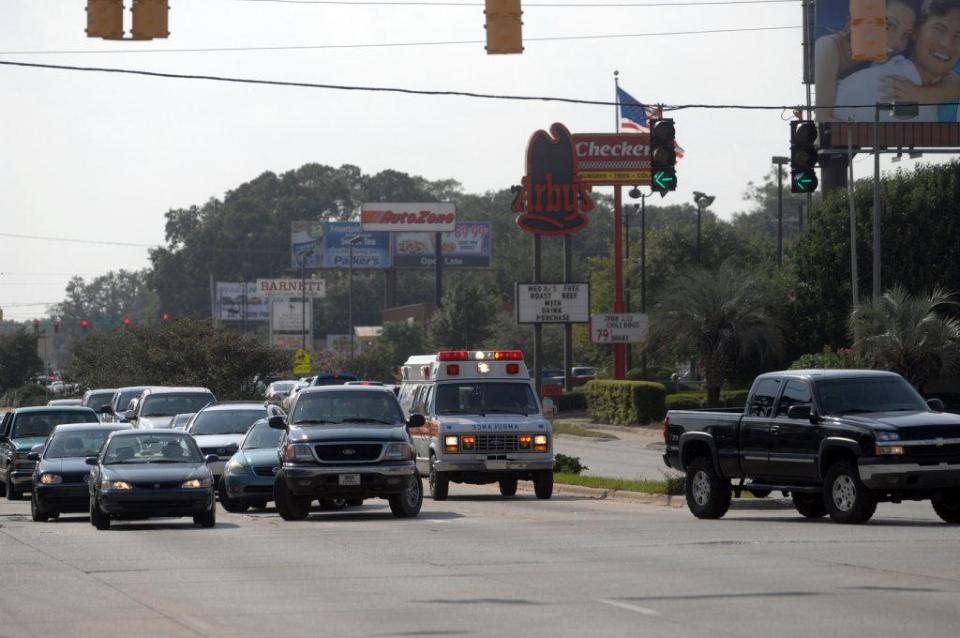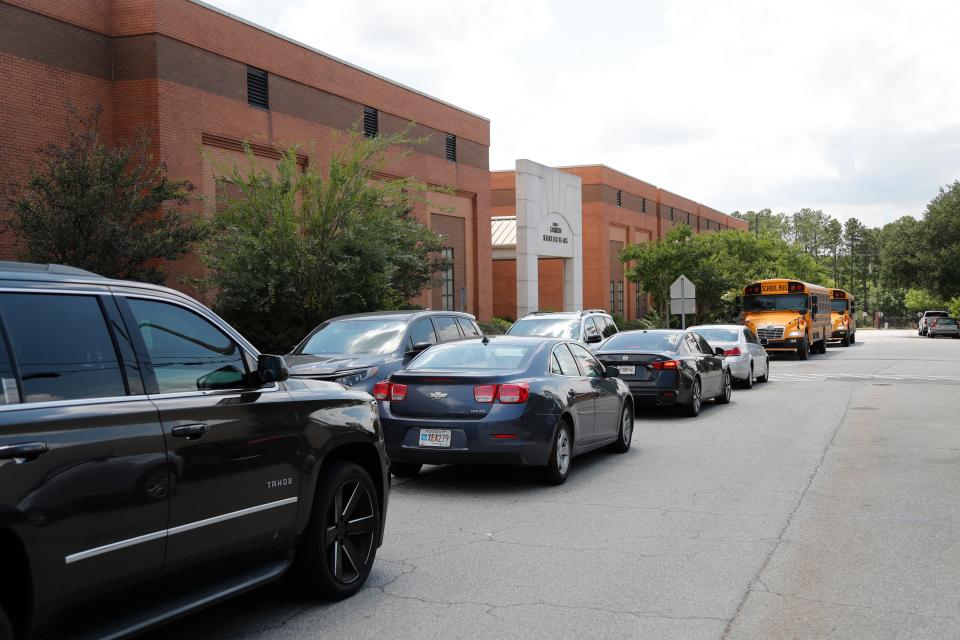Savannah's Vision Zero initiative's goal is to prevent traffic deaths altogether. But how?
The City of Savannah has set an ambitious goal: eliminating traffic deaths within the city limits by 2027.
That’s a tall order. Between 2013 and 2020, Savannah saw an average of 21 traffic-related deaths and 115 serious injuries yearly. According to a 2019 Smart Growth America report, Georgia has been ranked as one of the most dangerous states for pedestrians. Chatham County ranks sixth in the state.
But City Manager Jay Melder, at a presentation at the Massey Center on Sept. 14, said goals are supposed to be ambitious.
And Melder says they've got a plan: Vision Zero, a system the city manager says has been proven elsewhere, of which the central tenant is: traffic deaths do not have to be inevitable.
Read more: Pedestrian-related crashes are trending up in Savannah. Traffic calming help still a ways off.
Also: These intersections in Chatham County have the most pedestrian crashes. How can that stop?
And: Pedestrian fatalities continue to be a problem in Savannah. Could creative crosswalks help?
The city is still in the early stages of implementing Vision Zero, and there are not yet any road projects set in stone, but Melder said the beginning phases of the project are about adjusting the city's mindset before adjusting the city's roadways.
“That's really the paradigm shift between the old, outdated, conventional way of thinking, the ‘aw shucks’ approach to traffic and transit and mobility,” Melder said. “And now, it is this new approach that says we actually are smart enough to make a difference, because we are.”

What is Vision Zero?
Vision Zero was first implemented in Sweden in the 1990s. Following its success in Europe, American cities began adopting it. The "vision" part of Vision Zero references how municipalities approach car crashes and wrecks, leaning away from calling them "accidents."
"The reality is that we can prevent these tragedies by taking a proactive, preventative approach that prioritizes traffic safety as a public health issue,” Vision Zero’s website reads.
Take a look: Vision Zero Website
The idea is to stop seeing traffic deaths as inevitable and start treating them like they're preventable. It starts with the idea of accepting that driver mistakes are going to happen, but those mistakes don't have to result in a loss of life. Certain preventative measures can be put in place by municipalities that control the level of risk.
“This may be a new way of talking about it, and new commitment and a doubling down. But we've been working on things that help the region, traffic deaths and make our streets safer, for a long, long time. This is about optimizing those efforts,” Melder said.
Through extrapolation of data, compiled with the help of Vision Zero partner and Bike Walk Savannah Director of Operations Caila Brown, the city already has a good idea of where the troublesome areas are. The city will use data to help further define where Vision Zero can help.
“We can see where the incidents are occurring — what intersections, what sections of roadway, what kind of a day, what conditions outside,” Melder said. “And then we can start to understand why they happen, and then start to understand how to engineer to correct the problem.”

The road to zero
Wednesday's presentation to an audience of mostly senior downtown residents didn't include specific plans to make any roadways in the city safer. As of this point in the process, officials are looking at solutions that worked in other cities utilizing the Vision Zero program.
Melder's mention of "Twenty is plenty," a reference to a Washington D.C. initiative that capped residential speed limits at 20 mph, garnered an applause break.
Traffic calming was one measure listed to make roads safer. Traffic calming devices such as speed bumps, tabletop crosswalks, bump-outs, bike lanes and pedestrian signs are used to deliberately slow traffic in residential areas.

But the city is hoping to think beyond speed bumps and roundabouts and redesign roadways. District 6 Alderman Kurtis Purtee says the city is also hoping to enforce more traffic laws, something Purtee says has lapsed in the last few years.
Purtee says he’s pushing the city manager to urge the police department to enforce traffic laws more frequently, after traffic citations became a low priority under former Chief Roy Minter.
Purtee wants officers to be told that traffic “is one of Savannah’s biggest problems, and the only way to combat it is to be proactive, be seen and start enforcing some of our state traffic laws throughout the city streets."
Purtee added: “It helps to slow people down, and I’ll tell you, I’m from a mindset of the early to mid- '90s. When there used to be high crime areas in bigger cities, the police department would have their officers go out and enforce traffic laws in those problem areas, and the crime would diminish with the blue lights bouncing off the buildings and the police presence out there.”

Purtee said the city would be pursuing solutions for roadways near businesses and government buildings, considering adding parking, or changing the number of lanes in some roadways, building physical barriers between car lanes and bike lanes — it's all on the table. The city just has to decide which changes to implement.
Melder says the city won't be able to do it alone, and noted public input would be valuable to the project going forward.
"So there's a lot that the city can do to affect its own operation, but again, going back we are all tribal," Melder said. "We need to work together to be able to promote a culture of transit safety, transportation, mobility, safety, and make it a priority."
Will Peebles is the City Council and County Commission reporter for Savannah Morning News, covering local Savannah and Chatham County decisions. He can be reached at wpeebles@savannahnow.com or on Twitter @willpeeblesSMN
This article originally appeared on Savannah Morning News: Vision Zero Savannah: Goal set to eliminate traffic deaths by 2027

 money
money 